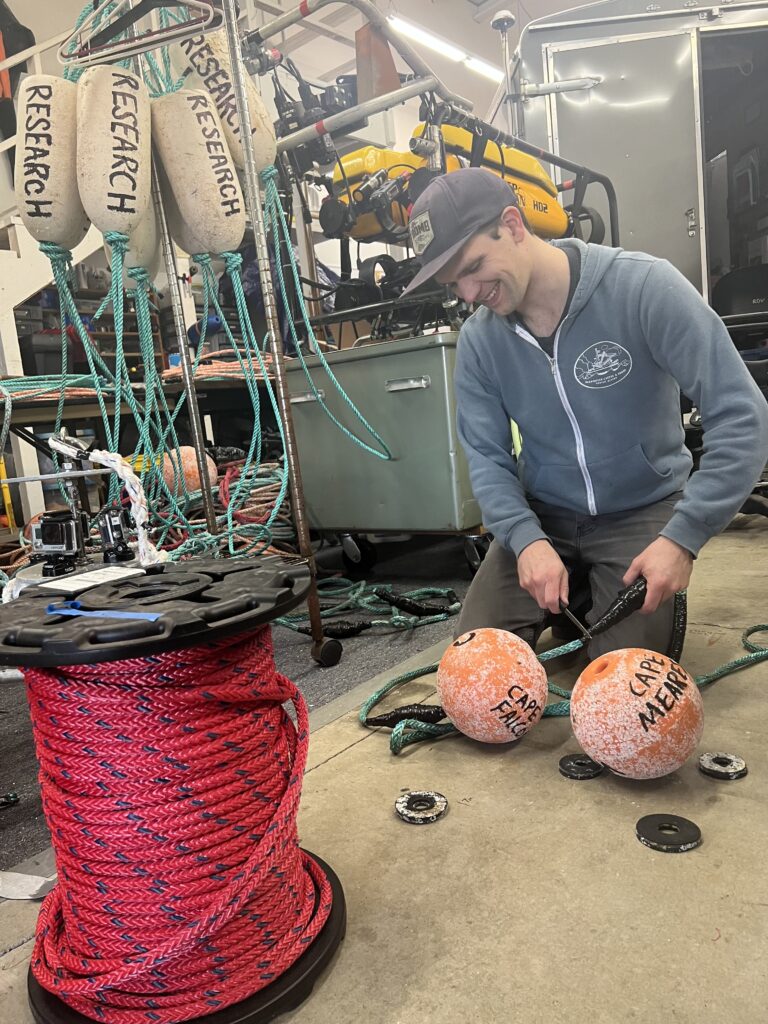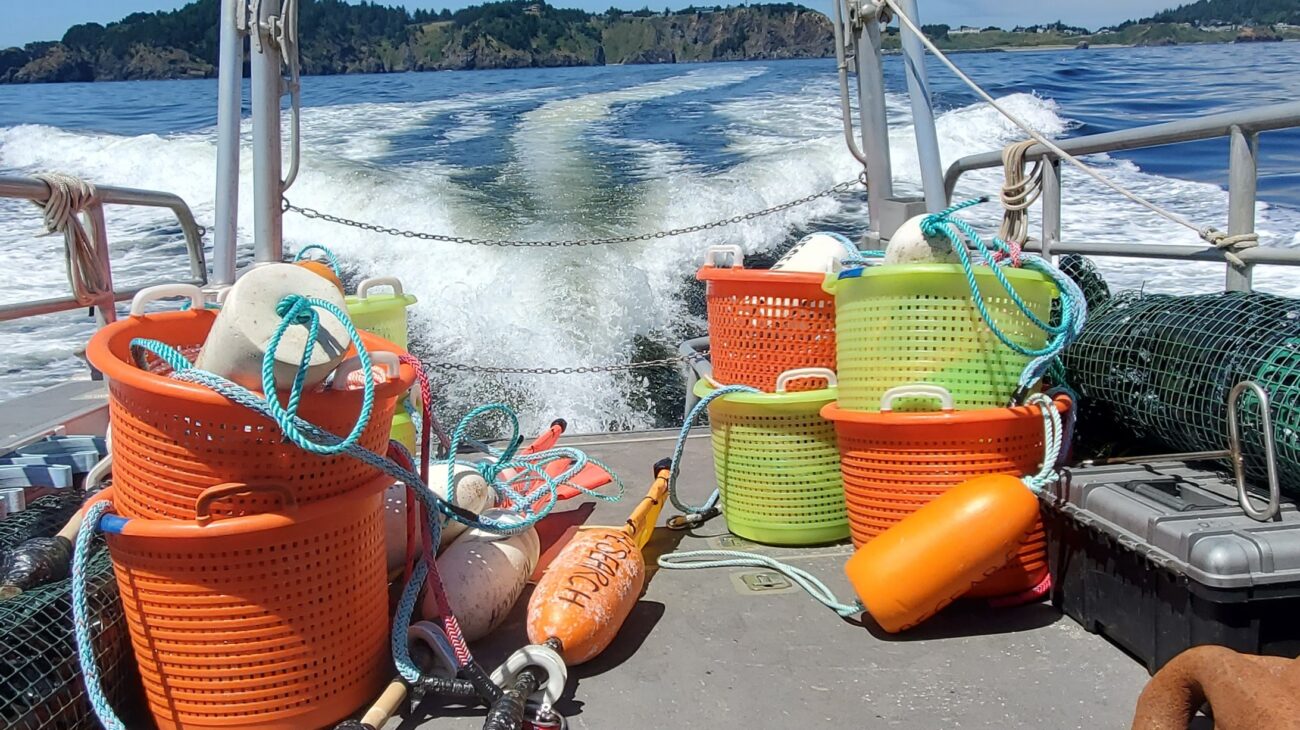Our ecological team is gearing up for field season!
The Ecological Research Team has been busy building moorings for two ongoing projects this spring. Our SMURFs (Standardized Monitoring Units for the Recruitment of Fishes) project, a collaborative effort with OSU that has been ongoing since 2011, focuses on determining what fish species are present when juveniles are recruiting into the nearshore environment. Specifically, the project aims to 1) quantify abundance and 2) identify community composition of settling temperate reef fishes. Moorings are placed in approximately 45 ft. of water with a bundle of plastic netting attached that will attract small juvenile fishes including rockfish, cabezon, and kelp greenling.
By taking samples every other week, we can better understand the timing of juvenile fish settling into the nearshore environment. We also attach oceanographic sensors to these moorings, including temperature, salinity, and oxygen loggers. We deploy SMURFs at the Otter Rock and Redfish Rocks Marine Reserves with help from the Oregon Coast Aquarium, OSU Small Boat Program, and commercial fishermen.

In addition to the oceanographic data collected from the SMURF moorings, we also deploy oceanographic moorings in the Cascade Head Marine Reserve, Cape Falcon Marine Reserve, and Cape Meares Comparison Area. Oceanographic moorings are deployed once in the spring and collected in September to provide valuable context to our biological data and help us understand long-term changes we see over time. Data from the Cape Falcon and Cape Meares oceanographic moorings represent the only nearshore oxygen data being collected on the north Oregon coast in state waters.
